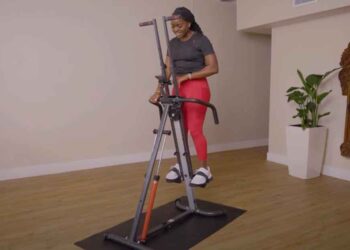Embarking on a journey to lose weight with cardio places you among countless others who share your aspirations and challenges. The quest for an effective weight-loss strategy often leads us to the power of cardiovascular exercise—a cornerstone of fitness that has transformed many lives. My experience as a health and wellness expert has allowed me to witness firsthand the profound impact a well-crafted cardio routine can have not just on an individual’s weight, but on their overall health and wellbeing. This guide aims to be your comprehensive starting point, offering insights into how you can harness the potential of cardiovascular exercise to meet your weight management goals.
The journey of weight loss is often fraught with myths, misconceptions, and one-size-fits-all solutions that don’t truly address the individual’s unique needs and preferences. It’s a path that can feel overwhelming, with every new piece of advice contradicting the last. However, the timeless wisdom that underpins successful weight management is understanding the basics—how our bodies respond to exercise, the role of diet, and the importance of mental wellbeing. Cardiovascular exercise, with its myriad forms and flexibility, offers a sustainable approach to weight loss that can be tailored to suit anyone’s lifestyle, fitness level, and personal preferences.
In this guide, we delve into the essentials of losing weight with cardio, from the science behind fat burning to practical tips for creating a routine that you’ll not only stick to but also enjoy. We’ll explore how to balance intensity and duration, the importance of variety to keep your workouts fresh and engaging, and how to complement your exercise regime with nutritional strategies that boost your efforts. Plus, we’ll debunk common myths that might be holding you back, offering you clarity and confidence as you take steps toward your goals.
Cardiovascular Exercise and Weight Loss – The Basics
Define Cardio
Cardiovascular exercise, commonly referred to as cardio, involves sustained physical activity that raises your heart rate into a targeted zone. This zone is where the magic happens – calories are burned, and your cardiovascular health sees significant improvement. Common forms of cardio include brisk walking, running, cycling, swimming, and aerobic classes, each offering unique benefits but sharing the common goal of improving heart health and aiding in weight loss.
How Cardio Helps
At its core, weight loss boils down to a simple equation: burning more calories than you consume. Cardiovascular exercise is effective because it increases the number of calories your body uses. For weight loss, the goal is to create a caloric deficit, and cardio helps you achieve that by boosting your metabolism both during and after exercise, thanks to a phenomenon known as the afterburn effect, or excess post-exercise oxygen consumption (EPOC).
EPOC refers to the increased rate of oxygen intake following strenuous activity, aimed at erasing the body’s “oxygen debt” and returning it to a resting state. This process requires energy, meaning you continue to burn calories at an elevated rate even after your workout is done. The intensity and duration of your exercise can affect the magnitude of the EPOC effect, making your approach to cardio crucial for maximizing fat loss.
Dispelling Myth
A common misconception is that cardio alone can lead to substantial weight loss. While it’s an effective component, achieving lasting weight loss requires a holistic approach, including dietary modifications. Cardio helps create a calorie deficit, but without nutritional adjustments, your progress may plateau.
The Right Cardio Approach for Weight Loss
Embarking on a weight loss journey through cardio requires more than just determination; it necessitates a strategic approach tailored to your individual health, preferences, and lifestyle. Cardiovascular exercise, by its very nature, offers a versatile palette of options suitable for individuals at any fitness level or stage of their weight loss journey. However, identifying the right mix of frequency, intensity, duration, and variety can transform your efforts from routine exercise to an effective, enjoyable path to weight loss.
Intensity Matters
To effectively lose weight with cardio, understanding the concept of target heart rate zones is crucial. Exercising in the ‘fat burning’ zone, which is typically 70-80% of your maximum heart rate, encourages your body to utilize fat as its primary energy source. Devices like heart rate monitors can help you stay within this optimal range.
Frequency
The American Heart Association recommends 150 minutes of moderate-intensity exercise per week, which can be broken down into 30-minute sessions over five days. Incorporating rest days is vital to allow your body to recover and prevent overtraining.
Duration
Starting with 30-minute sessions is advisable, gradually increasing to 60 minutes as your endurance improves. This incremental approach helps build stamina and ensures a sustainable progression towards longer, more intense workouts.
Variety is Key
Incorporating a variety of cardio workouts prevents boredom and helps overcome plateaus. Alternating between different types of cardio (e.g., cycling, swimming, running) keeps the routine exciting and challenges different muscle groups, enhancing overall fitness and fat loss.
The Best Cardio Workouts for Fat Burning
In the pursuit of weight loss, not all cardio workouts are created equal. Some exercises are more effective at burning fat, boosting metabolism, and improving cardiovascular health. Understanding which workouts can give you the best bang for your buck is crucial for anyone looking to optimize their fat-burning potential. Here’s a comprehensive look at some of the best cardio workouts for fat burning, each offering unique benefits and challenges to suit a variety of fitness levels and preferences.
HIIT (High-Intensity Interval Training)
HIIT involves short bursts of intense activity followed by rest periods, proven to enhance calorie burn and boost metabolism. A simple routine could include 30 seconds of sprinting followed by 1 minute of walking, repeated for 20-30 minutes.
Steady-State Cardio
This traditional form of cardio, such as brisk walking or using an elliptical, is excellent for beginners. It provides a solid foundation for building endurance and is easily adjustable to match fitness levels.
Fun Cardio Options
Incorporating activities you enjoy, like dancing or team sports, can make cardio feel less like a chore and more like a fun part of your day. These enjoyable forms of exercise can significantly contribute to your weekly calorie burn.
Beyond the Workout – Maximizing Cardio Success
Diet’s Importance
A balanced diet is paramount in conjunction with cardio for effective weight loss. Focusing on whole foods, reducing sugar intake, and ensuring adequate hydration complement your physical efforts and can accelerate results.
Strength Training Benefits
Incorporating strength training into your routine builds muscle, which burns more calories than fat, even at rest. This combination of cardio and strength training creates a more efficient metabolism, aiding in faster weight loss.
Sleep and Stress
Adequate sleep and stress management play critical roles in weight loss. Poor sleep and high stress levels can lead to hormonal imbalances that hinder weight loss efforts, making these aspects crucial components of a holistic approach to losing weight with cardio.
Conclusion
Embarking on a journey to lose weight with cardio is a transformative process that requires commitment, perseverance, and a holistic approach to health and wellness. By understanding the fundamentals of cardiovascular exercise, embracing a variety of workouts, and balancing your efforts with nutrition and recovery, you can optimize your cardio routine for effective weight loss. Remember, the journey towards a healthier, fitter you is not just about the pounds lost but about the strength gained, both physically and mentally. With the right mindset, tools, and support, you can achieve your weight loss goals and enjoy a healthier, more active lifestyle.













